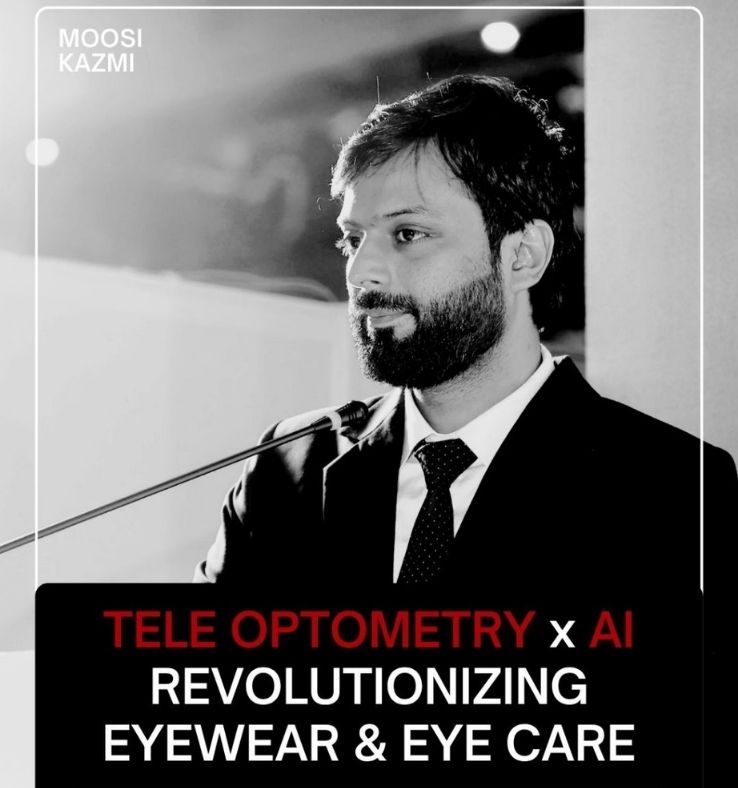GOING FOR A RUN IN MORNING LIGHT CAN HELP PROTECTING YOUR EYE SIGHT
4.jpg)
Having healthy eyes means having healthy body , right? Everything in the body is connected, so maintaining our overall health is just as important as caring of your eyes .But do you know running can improve your vision?
Many of us use exercise as a means to lose weight. Exercising will help our bodies stay fit. This will help us live longer and be more active but exercising also has a significant impact on our vision, Running can help reduce your risk of cataracts and even a brisk walk may lower your intraocular eye pressure to help prevent glaucoma. We are even not aware that exposure to sunlight or outside environment can prevent the risk of progression of myopia.
Cataract
Cataract is common in people above the age of 40. A cataract will cloud the lens of the eye as old protein cells begin to build up.
 |
How Running Can Improve Vision and Reduce Your Risk of Cataracts
Running is a great way to stay in shape and a great way to get you outside and moving, as the blood carries essential nutrients and oxygen which helps in keeping the lens healthy Running is a great option to increase that blood flow over a sustained period of time ,keeping the eyes young and healthy.
Glaucoma
Glaucoma is another one of the leading causes of blindness in older people. This disease damages the optic nerve and can quickly lead to vision loss if not spotted early.
 |
Effects of walking on Glaucoma
Light exercise such as a brisk walk can lower your risk of glaucoma. Light exercise such as this can help to increase blood flow in the eye. This will lead to a better balance in intraocular pressure.
Not only can a brisk walk help prevent glaucoma, but it can also ease the symptoms. It will help to reduce the high pressure in the eyes and get the blood flowing all over.
The main causes for degenerative damage to the optic nerve are thought to be impairment of good blood flow to deliver nutrient and remove waste products, and that oxidative stress that causes cell damage and cell death to many eye tissues and structure. So a good blood flow which can be maintain by a walk or a run can prevent us from irreversible loss of vision i.e glaucoma.
Myopia
Myopia refers to a condition where a person can see only objects that are near, as the image of distant objects could not be focused appropriately on the retina. Myopic eyes usually have longer axial length compared to
normal eyes.
Etiology and Risk Factors
Many factors are potential causes of myopia and myopia progression, including near work [1], shortage of outdoor time [2], Asian ethnicity, high educational level, parental myopia, low serum Vitamin D [3]
So seeing the risk factor we can come to conclusion on how the exposure to sunlight is important in preventing myopia progression. When we are outside we are far from near work keeping one of the causative agent of progression away from us. While we are running or walking in morning we are being exposed to sunlight and sunlight is a very good source of vitamin D. Vitamin D also helps in controlling the hormone dopamine which excess could cause elongation of axial length causing myopia progression. Hence directly and indirectly a morning walk can save us from progressive myopia.
CONCLUSION
We can see how a simple morning walk can not only maintain the body shape and size but also helps in maintaining the ocular health and protecting us from several ocular diseases. So we must maintain a good habit of going for a walk and exposing ourselves in sunlight for a healthy living.
It is found that people who are engaged in moderate physical exercise were less likely to have glaucoma than inactive people [4]. Not only glaucoma cataract and myopia but physical activity can also help people with diabetes keep their disease under control reducing the risk of complications including diabetic retinopathy.
REFERENCES
1. Lin?Z, Gao?TY, Vasudevan?B, Ciuffreda?KJ, Liang?YB, Jhanji?V, et al?Near work, outdoor activity, and myopia in children in rural China: the Handan offspring myopia study. [J]. BMC Ophthalmol. 2017?Nov;17(1):203.[PubMed]1471-2415
2. Yang?M, Luensmann?D, Fonn?D, Woods?J, Jones?D, Gordon?K, et al?Myopia prevalence in Canadian school children: a pilot study. [J]. Eye (Lond). 2018?Jun;32(6):1042–7.[PubMed]1476-5454
3. Choi?JA, Han?K, Park?YM, et al?Low Serum 25-Hydroxyvitamin D Is Associated with Myopia in Korean Adolescents. [J]. Invest Ophthalmol Vis Sci. 2014.0146-0404
4. Victoria L Tseng et al. Ophthalmol Glaucoma. 2020 Sep-Oct.

.jpg)

.jpg)
.jpg)
.jpg)


1.jpg)



.jpg)
.jpg)



_(Instagram_Post).jpg)
.jpg)
_(1080_x_1080_px).jpg)


with_UP_Cabinet_Minister_Sh_Nand_Gopal_Gupta_at_OpticsFair_demonstrating_Refraction.jpg)
with_UP_Cabinet_Minister_Sh_Nand_Gopal_Gupta_at_OpticsFair_demonstrating_Refraction_(1).jpg)

.jpg)








.jpg)



.png)




